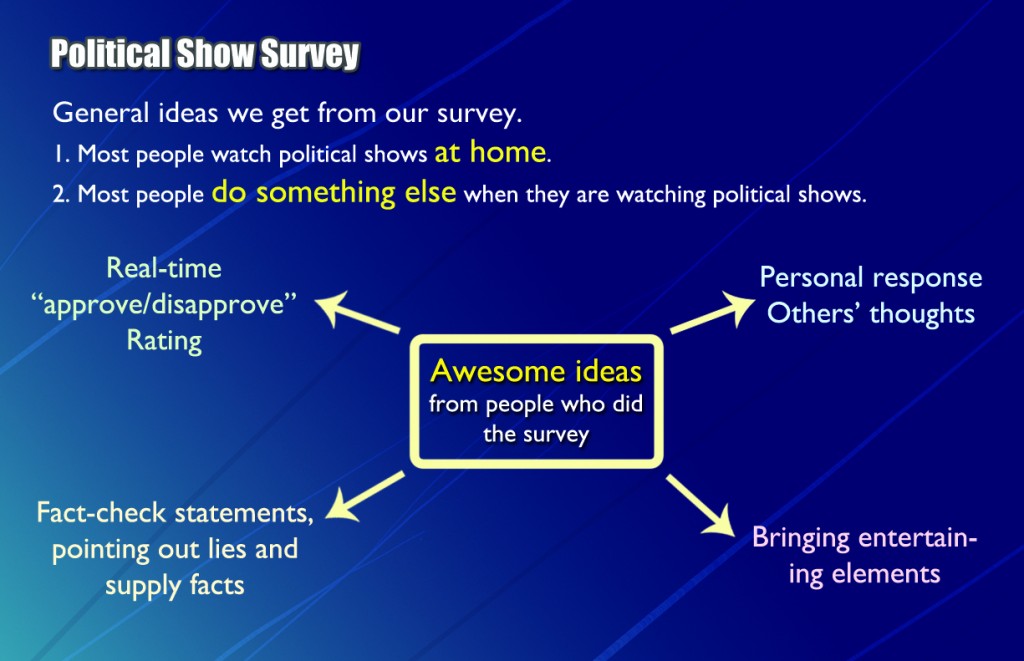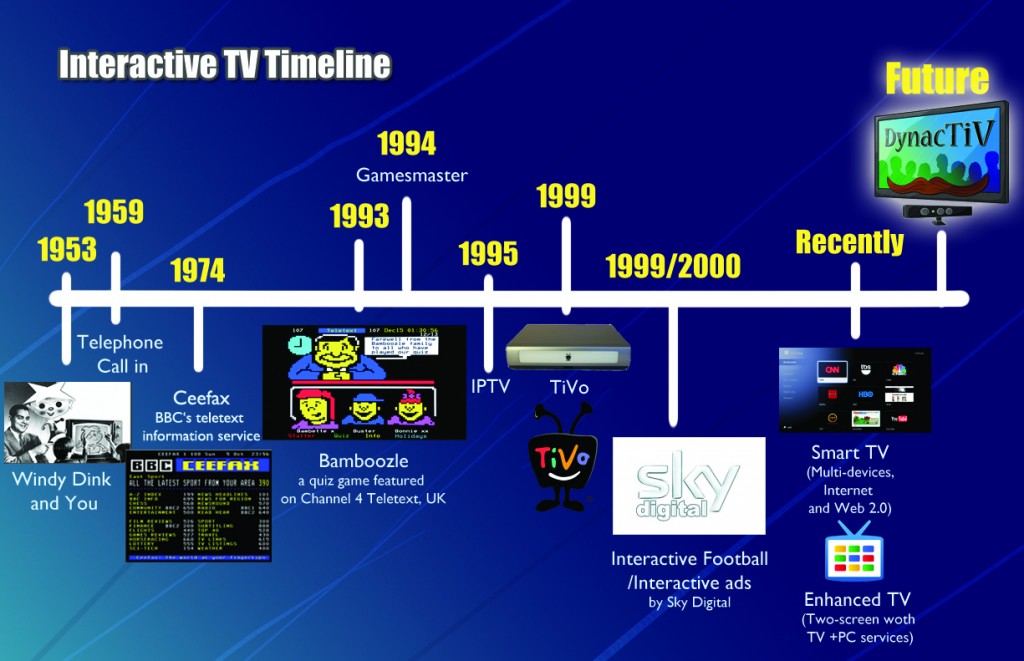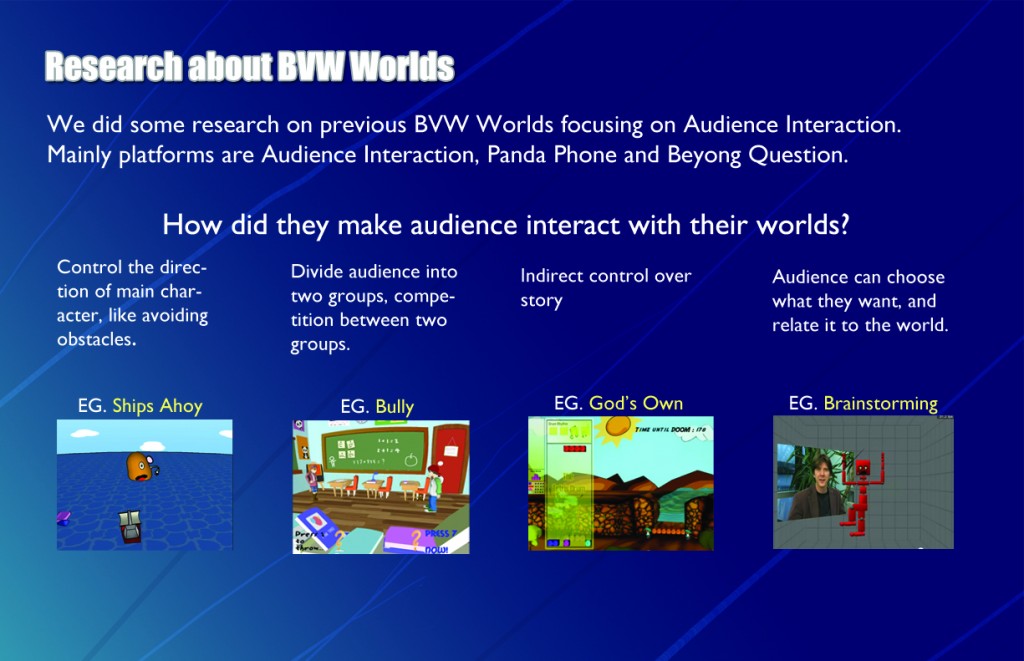Here is our first version for our design document. DesignIdeas_DynacTiV_v1.0
We got 6 basic ideas:
Number of people in room:
Generally, more people watching directly equates to interest. If the number of peopledecreases, then it means loss of interest. Some interesting situation dependent data can be pulled here as well, e.g. someone on screen drinks a soda -> see how many people leave -> presumably people who left wanted a drink.
Idle Movement:
Engaged people will tend to fidget less. When people are bored, they shift uncomfortably and seek other things to do. Care has to be taken, however, since certain things can naturally cause audiences to move e.g. laughter. Reading the data within context will be important.
Background noise levels:
Typically, more noise -> less interest. Engaged Audiences tend to be quiet.
Care has to be taken as the context of the situation can change the meaning of background noise. An example is cheering or laughter as opposed to small talk or murmurs.
Simulated Audience
Composites of cutouts and audio of a sample size of the viewers at home to simulate a “live” audience for the performer. In this avenue, the use of Microsoft Avatars instead is an alternative.
Voting in a Buried UI
Burying the UI makes it take some effort to access. This makes the vote much more meaningful.
“Throwing Tomatoes”
Visual/Audio gimmicks that can also feedback useful data, e.g. throwing a tomato means disapproval and throwing flowers means approval.


